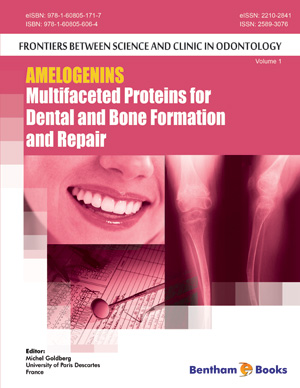Abstract
In addition to its critical structural function during enamel biomineralization amelogenin protein also exhibits distinct signaling activities in a variety of in vitro and in vivo experimental systems. We present computational and biophysical data to demonstrate that amelogenin belongs to the class of Intrinsically Disordered Proteins (IDPs). IDPs lack a well-defined 3D structure under native conditions and are typically flexible, extended, and have little secondary structure in vitro in the absence of partners. This chapter considers details of the conformation, secondary structure, and degree of disorder in amelogenin. We propose that the occurrence of “conformational plasticity” in amelogenin explains its multi-functionality, contributes to its strong tendency to self-assemble, and its potential to specifically interact with different targets.
Keywords: Amelogenin, Intrinsic Disordered Proteins, Biomineralization, Enamel






















